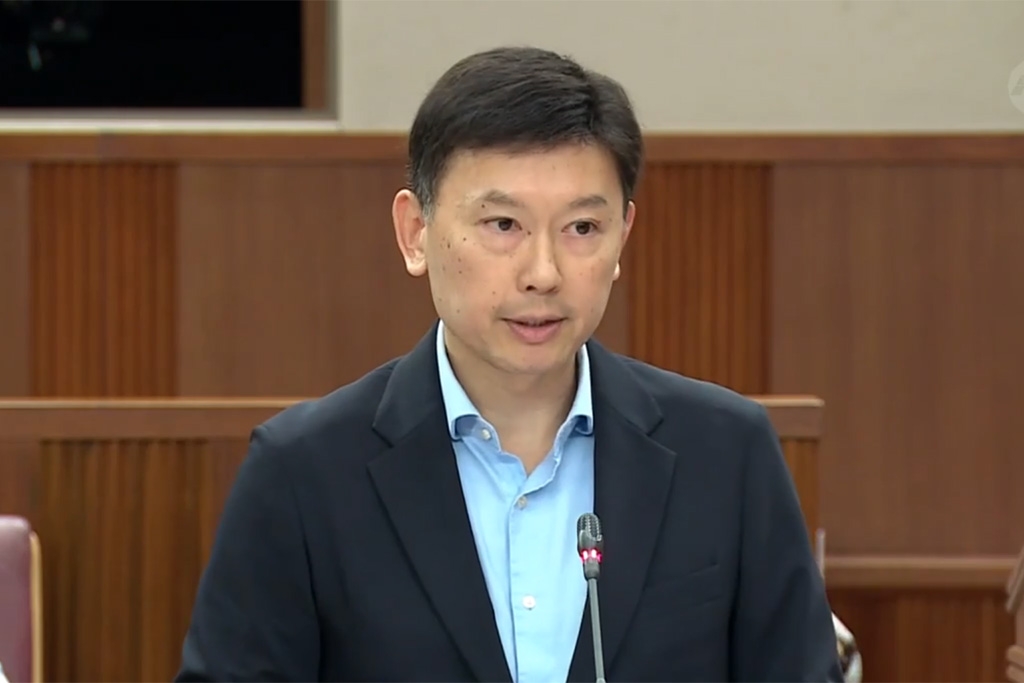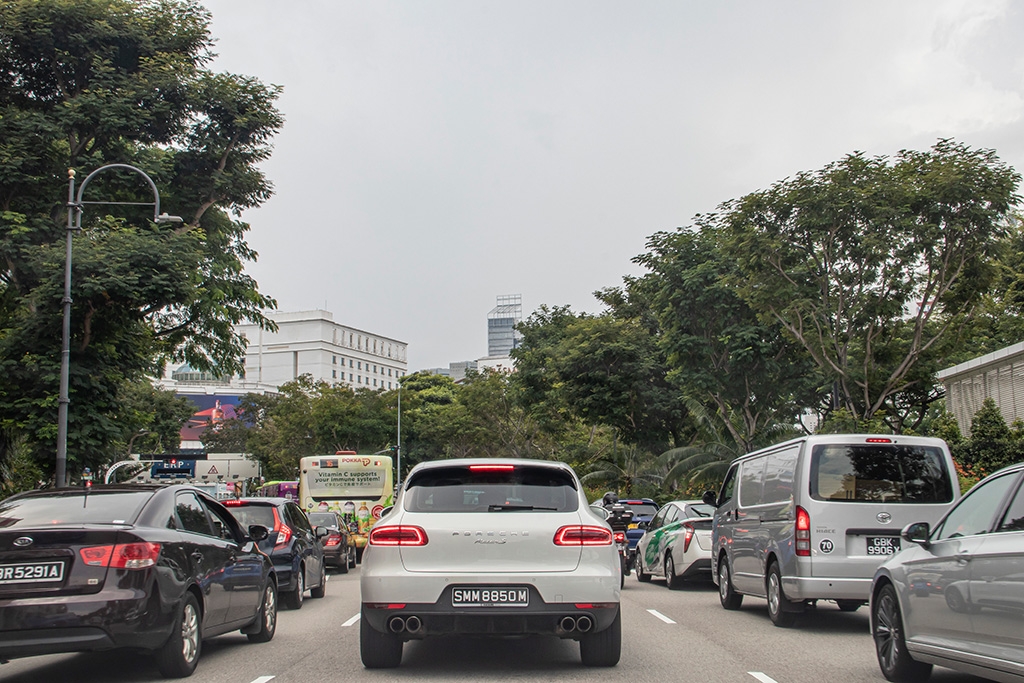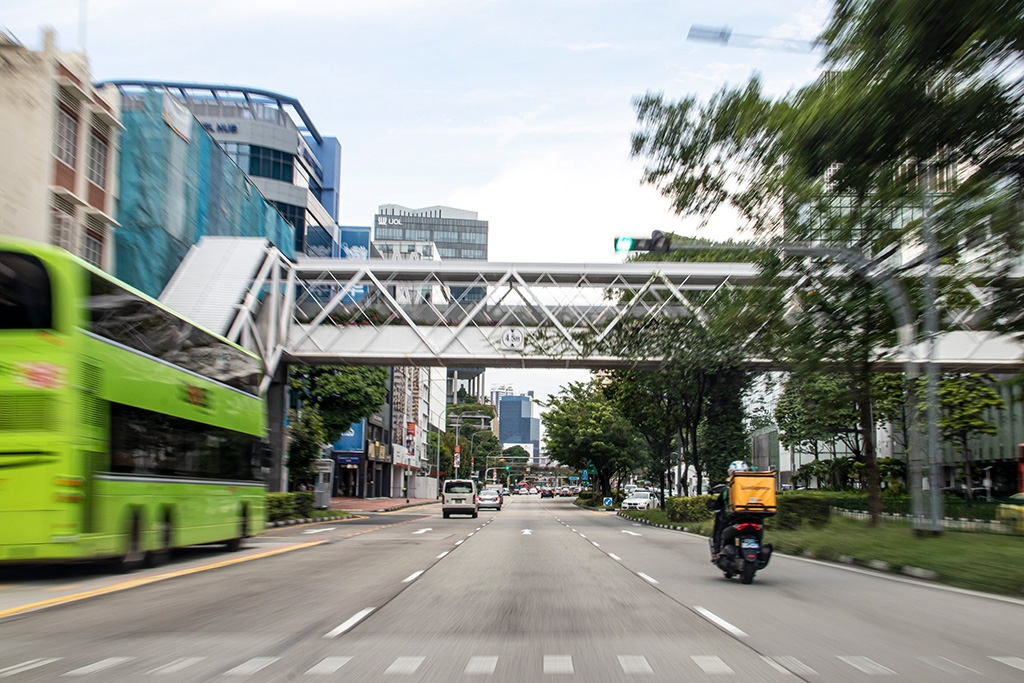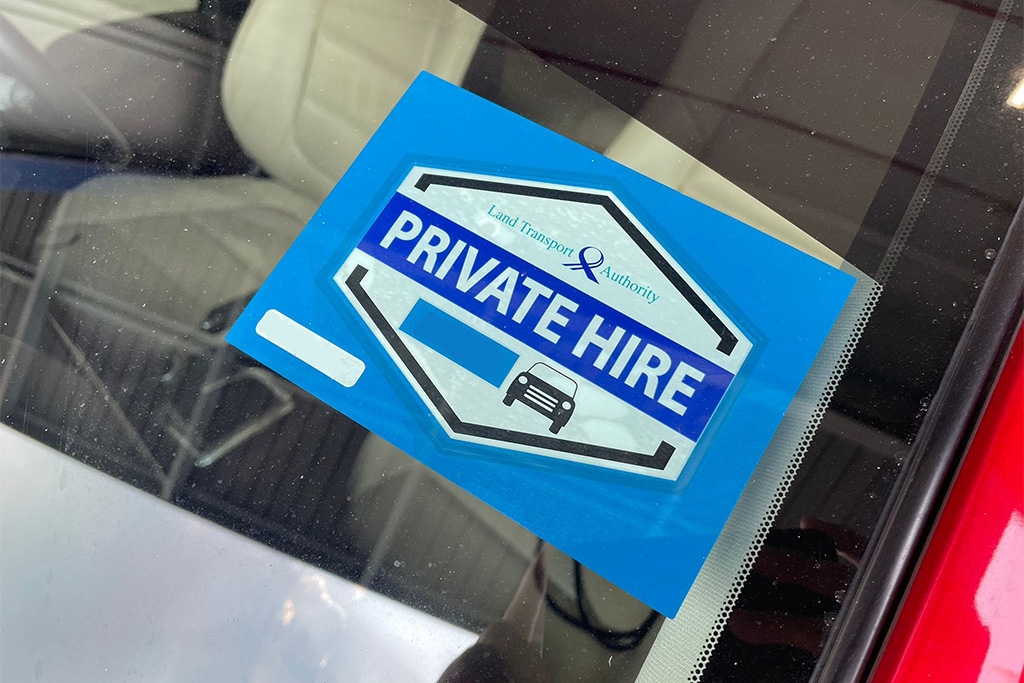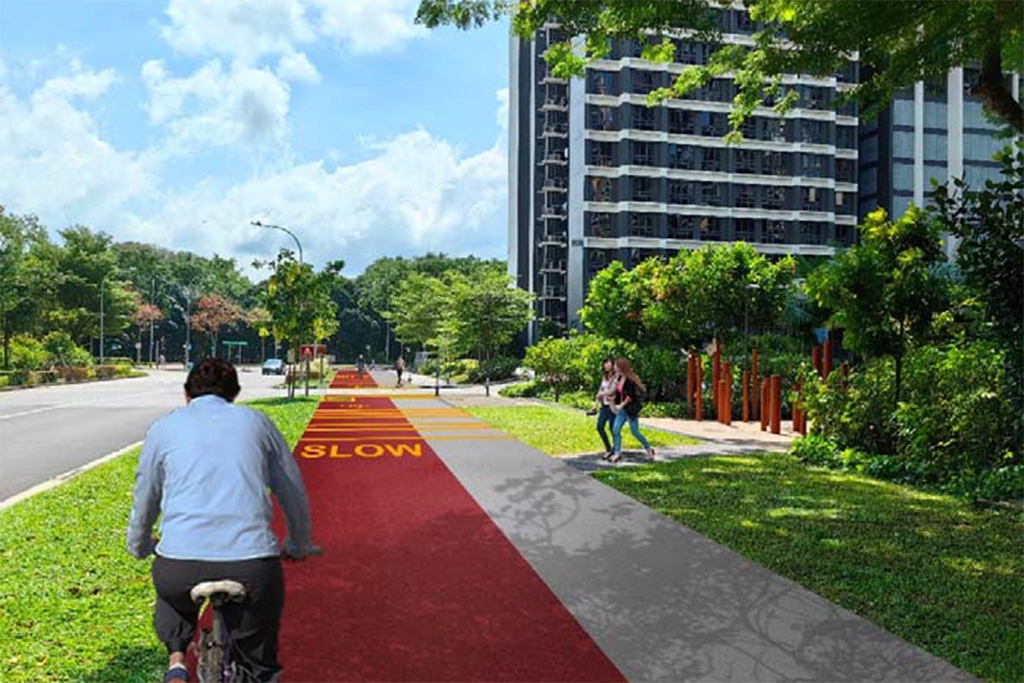COE quota to rise as government adopts cut-and-fill approach
06 Nov 2023|18,922 views
The government is paying close attention to the unsettling rate at which COE premiums have risen over the past year - and it is adopting a 'cut-and-fill' approach to ensure that quota will keep rising through 2024, up till the peak supply years of 2026 and 2027.
And from the chorus of complaints about car-leasing companies, the fears that foreigners are inflating the car market with indiscriminate, big-ticket purchases, as well as the concerns about households having more than one car, the authorities have also heard every disgruntled comment from the ground.
This much was made clear during the parliamentary session on Monday, 6 November 2023, during which Mr. Chee Hong Tat, current Acting Minister for Transport, addressed questions from fellow MPs on the topic of managing volatility in COE supply and demand.
'Cut-and-fill' approach to raise current COE supply
Amidst the deluge of information shared during the session, one key message stood out: COE quota is set to rise from now till the 2026 to 2027 period, when the government foresees a supply peak. As to how this will be made possible, a new term (and strategy) we haven't seen quite frequently up till now is being introduced by the government - called the 'cut-and-fill' approach.
As Mr. Chee explained it, high volatility in COE prices (above $150,000 for Cat B now for instance, compared to around $80,000 back in end-2021) arises as a result of large differences in supply between the peak and trough years. (Unsurprisingly, we are currently in a supply trough.) In the Minister's words, the 'cut-and-fill' approach thus aims to "shave off the future peaks, and - using the supply - to fill the current troughs."
A small taster of the 'cut-and-fill' approach appears to have taken shape in the unprecedented one-time adjustment made by the LTA earlier this year. Back in May, it had announced that it would be taking 6,000 COEs guaranteed to come from the de-registrations of cars with five-year non-extendable COEs, and spreading them out over the next few quarters. It now appears that we can expect more of such adjustments.
"There will be trade-offs"
Last Friday, we witnessed another round of the 'cut-and-fill' approach at work when LTA announced yet another injection of available COEs. These new COEs will be supplied across Categories A, B, and C, for the period from November 2023 to January 2024.
But this is not to be taken as a permanent strategy, and one that should be "calibrated". Mr. Chee cautioned more than once during the parliamentary sitting that there will be trade-offs if overdone.
This is because the approach entails borrowing from the future for use now, which increases the risk of us having more vehicles on the roads before they are due for de-registration in the peak years. Mr. Chee said there is a need to balance volatility with the act of raising supply in 'trough' years.
The discussion invited a stream of questions regarding considerations underpinning the allocation of COEs across the categories; a possible re-allocation of COEs from Category B to Category A for instance; and ways to help SMEs cope with the escalating COE prices when they refresh their commercial vehicles. But what was in the spotlight was the Category D (for motorcycles) COE supply. In Friday's announcement, this category received no injection of COEs.
Mr. Chee said the government maintains its stand on zero growth not only for the motorcycle population but also other types of vehicles. Recognising that there are Singaporeans - especially those from lower-income households - who rely heavily on motorcycles for a livelihood or to get around, Mr. Chee said the authorities will continue to keep close tabs on the situation and adjust measures accordingly. He also assured that the current allocation and additions of COEs are fair and in keeping with current demand needs.
Point-to-point services not the driver of record high COE premiums
The focus, it appears, is on ramping up capacity for Point-to-Point (PTP) services. This likely explains the prioritisation of COEs for certain categories since these form the bulk of Private Hire Vehicles (PHVs).
On the note of PHVs, the parliamentary session also saw Mr. Chee addressing questions on whether car leasing companies have had a heavier hand in influencing the unprecedented highs breached by COE premiums over the past quarter.
Mr. Chee revealed that car leasing companies had won about 21% of Cat A COEs in the last three quarters (spanning February to October 2023) - which was lower than the 27% that they won in the same period for 2022. The same trend was observed for Cat B, which is seeing a more marginal year-on-year dip (23% for this year, compared to 24% in 2022).
Crucially, this phenomenon of less aggressive bidding by such companies comes as the usage of private-hire cars (PHCs) continues to rise. Pre-pandemic, they used to provide three out of five PTP trips, but are now responsible for two out of three of them.
While the percentage of COEs won by car leasing companies is still substantial, the downward trend has led the government to ascertain that they are not responsible for the record premiums we have witnessed recently.
Mr. Chee was also quick to add that a separate COE category for car-leasing companies would not necessarily be a silver bullet to the current pricing crisis.
"The quota for this new category would have to be drawn from existing categories given our zero-growth policy. As PHC demand is still evolving, and could vary from quarter to quarter, it is difficult to ascertain what is the exact quota required to meet the needs of drivers and commuters," he explained.
Moving too much quota from Cat A and B to the new category could cause supply to fall too much in those categories, risking further COE price spikes. Contrarily, allocating insufficient quota to the new category could see shortages in PTP services.
Still on track for car-lite vision
In response to a question on whether there is scope to increase the number of vehicles on the roads as the adoption of Electric Vehicles (EVs) picks up and road capacity increases, Mr. Chee said that "we cannot keep building roads".
He brought up the example of the ongoing works for the North-South Corridor to illustrate how freeing up land space taken up by roads will allow us to "generate more value for society as a whole". This could include uses centred around communities living along the transit corridor, such as cycling trunk routes into the city.
Above all, the authorities' commitment to upholding a zero-growth policy for the passenger vehicle population remains. "It is not tenable for our vehicle population to keep increasing", Mr. Chee said, reiterating that allowing otherwise would result in the apportioning of more land for roads, or higher levels of congestion - both undesirable outcomes in land-scarce Singapore.
Instead, the nation is still working towards its goal of going car-lite via a more robust public transport network. This will not only benefit more Singaporeans (car ownership is now more exclusive than in the past; only one in three households have a car), but also help the country reduce its domestic carbon emissions.
The government is paying close attention to the unsettling rate at which COE premiums have risen over the past year - and it is adopting a 'cut-and-fill' approach to ensure that quota will keep rising through 2024, up till the peak supply years of 2026 and 2027.
And from the chorus of complaints about car-leasing companies, the fears that foreigners are inflating the car market with indiscriminate, big-ticket purchases, as well as the concerns about households having more than one car, the authorities have also heard every disgruntled comment from the ground.
This much was made clear during the parliamentary session on Monday, 6 November 2023, during which Mr. Chee Hong Tat, current Acting Minister for Transport, addressed questions from fellow MPs on the topic of managing volatility in COE supply and demand.
'Cut-and-fill' approach to raise current COE supply
Amidst the deluge of information shared during the session, one key message stood out: COE quota is set to rise from now till the 2026 to 2027 period, when the government foresees a supply peak. As to how this will be made possible, a new term (and strategy) we haven't seen quite frequently up till now is being introduced by the government - called the 'cut-and-fill' approach.
As Mr. Chee explained it, high volatility in COE prices (above $150,000 for Cat B now for instance, compared to around $80,000 back in end-2021) arises as a result of large differences in supply between the peak and trough years. (Unsurprisingly, we are currently in a supply trough.) In the Minister's words, the 'cut-and-fill' approach thus aims to "shave off the future peaks, and - using the supply - to fill the current troughs."
A small taster of the 'cut-and-fill' approach appears to have taken shape in the unprecedented one-time adjustment made by the LTA earlier this year. Back in May, it had announced that it would be taking 6,000 COEs guaranteed to come from the de-registrations of cars with five-year non-extendable COEs, and spreading them out over the next few quarters. It now appears that we can expect more of such adjustments.
"There will be trade-offs"
Last Friday, we witnessed another round of the 'cut-and-fill' approach at work when LTA announced yet another injection of available COEs. These new COEs will be supplied across Categories A, B, and C, for the period from November 2023 to January 2024.
But this is not to be taken as a permanent strategy, and one that should be "calibrated". Mr. Chee cautioned more than once during the parliamentary sitting that there will be trade-offs if overdone.
This is because the approach entails borrowing from the future for use now, which increases the risk of us having more vehicles on the roads before they are due for de-registration in the peak years. Mr. Chee said there is a need to balance volatility with the act of raising supply in 'trough' years.
The discussion invited a stream of questions regarding considerations underpinning the allocation of COEs across the categories; a possible re-allocation of COEs from Category B to Category A for instance; and ways to help SMEs cope with the escalating COE prices when they refresh their commercial vehicles. But what was in the spotlight was the Category D (for motorcycles) COE supply. In Friday's announcement, this category received no injection of COEs.
Mr. Chee said the government maintains its stand on zero growth not only for the motorcycle population but also other types of vehicles. Recognising that there are Singaporeans - especially those from lower-income households - who rely heavily on motorcycles for a livelihood or to get around, Mr. Chee said the authorities will continue to keep close tabs on the situation and adjust measures accordingly. He also assured that the current allocation and additions of COEs are fair and in keeping with current demand needs.
Point-to-point services not the driver of record high COE premiums
The focus, it appears, is on ramping up capacity for Point-to-Point (PTP) services. This likely explains the prioritisation of COEs for certain categories since these form the bulk of Private Hire Vehicles (PHVs).
On the note of PHVs, the parliamentary session also saw Mr. Chee addressing questions on whether car leasing companies have had a heavier hand in influencing the unprecedented highs breached by COE premiums over the past quarter.
Mr. Chee revealed that car leasing companies had won about 21% of Cat A COEs in the last three quarters (spanning February to October 2023) - which was lower than the 27% that they won in the same period for 2022. The same trend was observed for Cat B, which is seeing a more marginal year-on-year dip (23% for this year, compared to 24% in 2022).
Crucially, this phenomenon of less aggressive bidding by such companies comes as the usage of private-hire cars (PHCs) continues to rise. Pre-pandemic, they used to provide three out of five PTP trips, but are now responsible for two out of three of them.
While the percentage of COEs won by car leasing companies is still substantial, the downward trend has led the government to ascertain that they are not responsible for the record premiums we have witnessed recently.
Mr. Chee was also quick to add that a separate COE category for car-leasing companies would not necessarily be a silver bullet to the current pricing crisis.
"The quota for this new category would have to be drawn from existing categories given our zero-growth policy. As PHC demand is still evolving, and could vary from quarter to quarter, it is difficult to ascertain what is the exact quota required to meet the needs of drivers and commuters," he explained.
Moving too much quota from Cat A and B to the new category could cause supply to fall too much in those categories, risking further COE price spikes. Contrarily, allocating insufficient quota to the new category could see shortages in PTP services.
Still on track for car-lite vision
In response to a question on whether there is scope to increase the number of vehicles on the roads as the adoption of Electric Vehicles (EVs) picks up and road capacity increases, Mr. Chee said that "we cannot keep building roads".
He brought up the example of the ongoing works for the North-South Corridor to illustrate how freeing up land space taken up by roads will allow us to "generate more value for society as a whole". This could include uses centred around communities living along the transit corridor, such as cycling trunk routes into the city.
Above all, the authorities' commitment to upholding a zero-growth policy for the passenger vehicle population remains. "It is not tenable for our vehicle population to keep increasing", Mr. Chee said, reiterating that allowing otherwise would result in the apportioning of more land for roads, or higher levels of congestion - both undesirable outcomes in land-scarce Singapore.
Instead, the nation is still working towards its goal of going car-lite via a more robust public transport network. This will not only benefit more Singaporeans (car ownership is now more exclusive than in the past; only one in three households have a car), but also help the country reduce its domestic carbon emissions.
Latest COE Prices
July 2025 | 2nd BIDDING
NEXT TENDER: 06 Aug 2025
CAT A$101,102
CAT B$119,101
CAT C$68,600
CAT E$120,000
View Full Results Thank You For Your Subscription.











